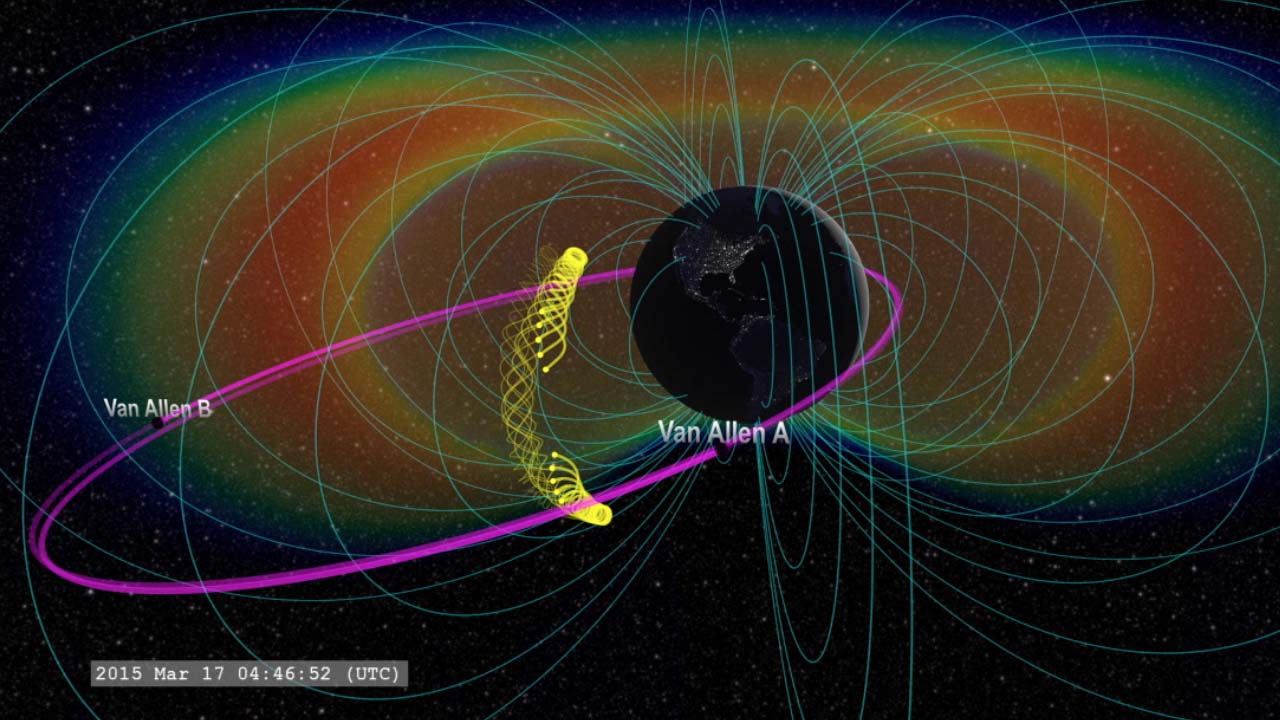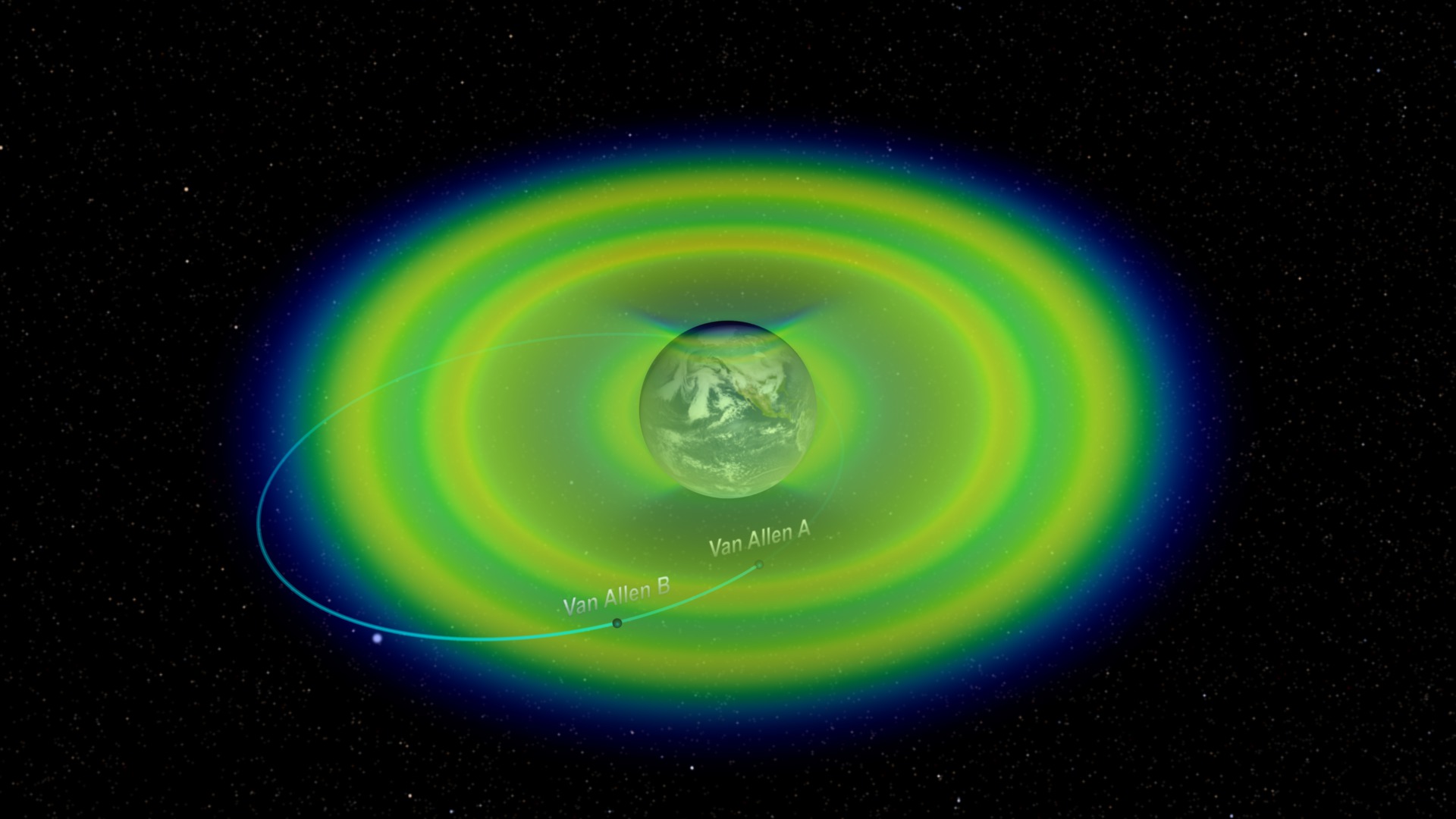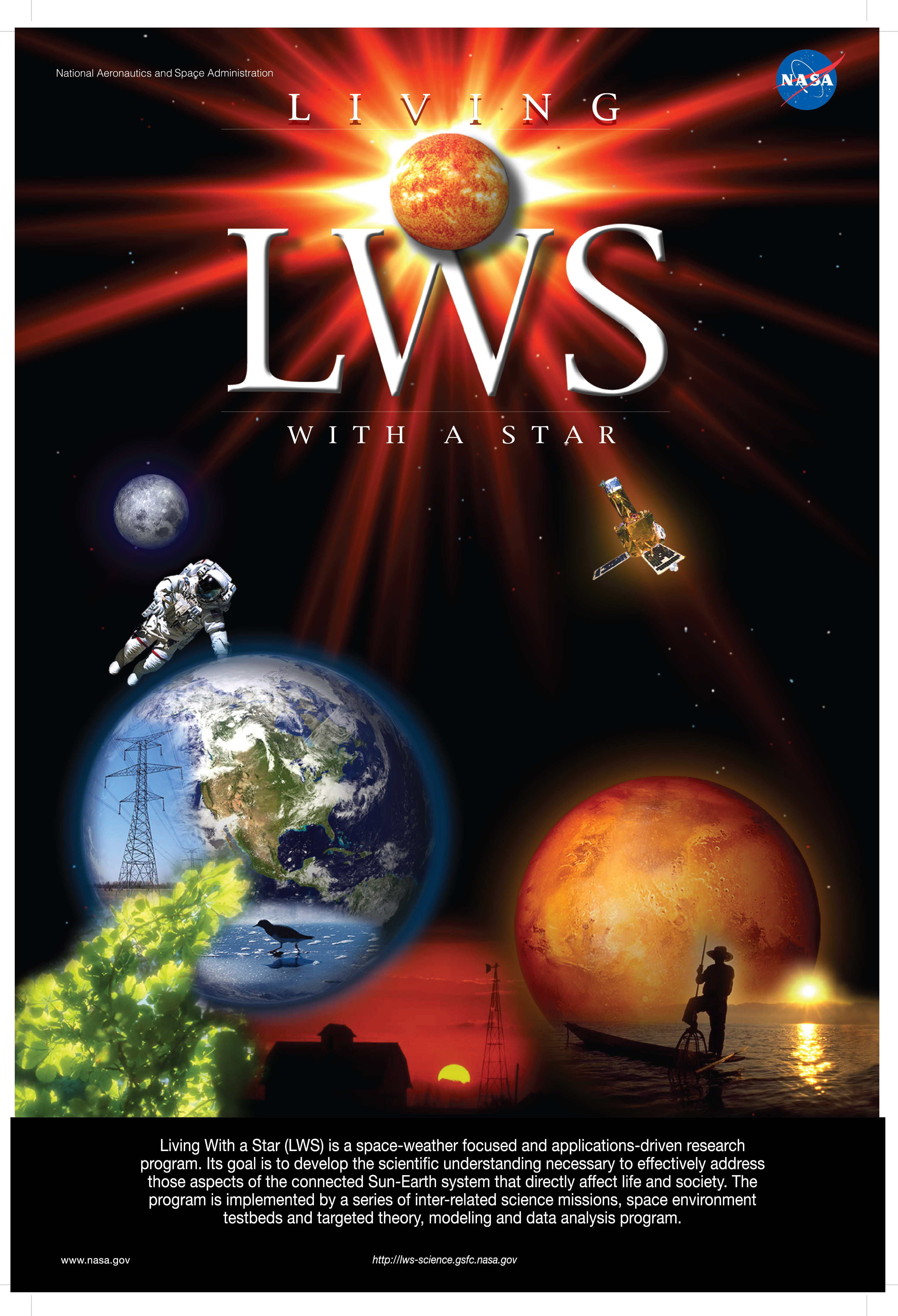Ring Around Our Planet
Within days of its launch on August 30, 2012, NASA's Van Allen Probes collected data that will rewrite textbooks. The mission consists of two spacecraft orbiting through the radiation belts encircling Earth. Scientists want to understand what causes the changing shapes of the belts—a region that can sometimes swell dramatically in response to incoming energy from the sun, posing a threat to satellites and spacecraft. Inner and outer radiation belts were discovered in 1958 with instruments on the very first U.S. satellites sent into space. But in September 2012 something happened that had never been recorded before: the particles that make up the belts settled into a new configuration, separating into three belts instead of two. The third belt lasted for four weeks, proving that the Van Allen Probes have much left to explore in near-Earth space. Watch the visualization to see what the Van Allen Probes observed.

NASA spacecraft discover a third radiation belt surrounding Earth.
The inner, outer and third rings are colored orange and green in this cutaway view of the Van Allen Belts.
Watch this video to learn more about the discovery made by the Van Allen Probes.

The two Van Allen Probes are designed to lap each other many times during the mission, to observe occurrences throughout the belts.

When the Van Allen Probes launched, scientists thought the belts always looked like this, with two belts—shown here in red.

The third radiation belt probably formed due to this prominence eruption on the sun, imaged by NASA's SDO on Aug. 31, 2012.
For More Information
See NASA.gov
Credits
Please give credit for this item to:
NASA's Goddard Space Flight Center
-
Animator
- Tom Bridgman (Global Science and Technology, Inc.)
-
Video editor
- Genna Duberstein (USRA)
-
Narrator
- Karen Fox (ADNET Systems, Inc.)
-
Producer
- Genna Duberstein (USRA)
-
Scientists
- Shrikanth G. Kanekal (NASA/GSFC)
- Dan Baker (University of Colorado)
- Nicola Fox (NASA)
-
Writer
- Karen Fox (ADNET Systems, Inc.)
Release date
This page was originally published on Thursday, May 2, 2013.
This page was last updated on Wednesday, May 3, 2023 at 1:52 PM EDT.


